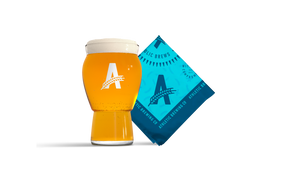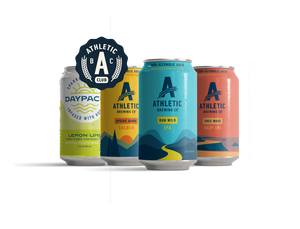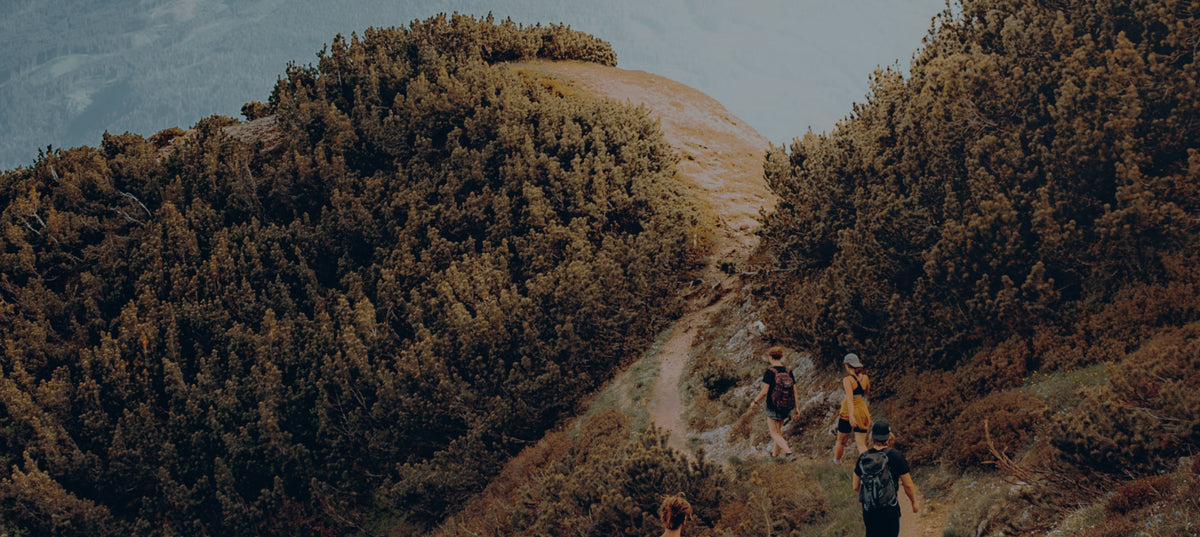Moving Mountains

Five women find joy while battling Covid on the side of a mountain.

We all clambered out of our tents, zipping on our big puffy jackets and flipping the hoods over our heads. The tent doors whipped in the wind, WHAP WHAP WHAP, making it hard to zip them up. Our tents were sturdy and made for the mountain, but we had taken much care in setting them up. The wind could easily destroy a tent, the collapsed and torn tents nearby were tangible evidence of that.
Bracing ourselves against the gusts, the five of us stood and admired the display in front of us. The sun had just started dipping below the mountains to the west casting bright, orange-red rays of light over our camp. The surrounding tents glowed as if lit from within and the puffy clouds in the distance blazed like embers in a fire. This view was worth pulling ourselves out of our big, warm sleeping bag nests for.

The Mountain
We were standing at Camp Canada, the first of three high camps on the upper mountain of Cerro Aconcagua in Argentina. Standing at 22,840 feet, Aconcagua is the tallest mountain in the Americas and one of the Seven Summits. Camp Canada, at 16,200 feet of elevation, is the first of three primitive high camps on the way to the summit. At this point, we were eight days into our 16-day trip, having trekked through two other structured camps along the way.

Photo: AWExpeditions
Mountaineering is inherently uncomfortable. It embodies what we like to call Type II Fun; that kind of fun that isn’t necessarily fun at the moment but you look back on and think, “Wow! That Was AWESOME!” This activity is full of uncertainty, unpredictable weather, physical challenges, disrupted sleep, unforeseeable obstacles, and some risk. We expect discomfort, and frankly, it’s what we want. We mountaineer to push ourselves outside our comfort zones, to challenge ourselves physically and mentally, and to overcome obstacles. There is a sense of accomplishment within those things.
Most people climb Aconcagua in an expedition style, spending several days at each camp to acclimatize to the elevation, then moving on to the next camp. Typically, the Aconcagua climber hires a Gaucho and his mules to carry some of the climbing gear to Plaza de Mulas (Basecamp), making the 16-mile trek to Basecamp much easier with a lighter pack. Once you’re at basecamp, you can collect your gear and start your move to the upper mountain. In this style, you move slowly up the mountain by carrying gear to the next camp one day, taking a rest day at the lower camp, then carrying the rest of your gear and moving camp the day after that. Climbers will usually spend two to four days at each camp, depending on how well acclimatization goes. There are different ways to go about this, and there is no one right way to acclimatize perfectly.
 Photo: AWExpeditions
Photo: AWExpeditions
On this particular evening, our team of five women, including myself, were on the eve of our move to Nido de Condores, or Camp 2. Nido de Condores, affectionately called Nido (nest in Spanish), sits in a large bowl on the side of the mountain. It is more protected from the wind than the very exposed Camp Canada, so we were looking forward to the move, especially with the forecast showing more wind and some snow on the way.
The Team
 Photo: AWExpeditions
Photo: AWExpeditions
I was there as an assistant guide with AWExpeditions, an all-women’s expedition company, along with lead guide Sunny Stroeer, AWExpeditions’ founder. I had guiding experience on 14ers in the United States, but had never guided internationally, nor had I guided at that elevation. I knew this trip was going to be a big deal for me - adding a trip like this to my guiding resume would be extremely valuable, after all - and I fully expected (and wanted) to be challenged.
Our team consisted of five women (including myself) from all over the country and from all walks of life. We are all vastly different, but share some things in common; a love of the outdoors, a desire to overcome challenges, and the determination to see more women involved in activities such as this.
Moving to an elevation of 18,300 feet put us in danger of developing High Altitude Pulmonary Edema (HAPE), or High Altitude Cerebral Edema (HACE), both llife-threatening conditions. We were all very mindful of how we were feeling, and Sunny and I checked in with everyone every few minutes.
There were the usual high-altitude gripes; mild headaches, fatigue, shortness of breath; all very normal for that elevation. We moved slowly and steadily upward as snow started to come down, our heavy packs caught the wind and threatened to drag us backward through the dust and scree. I couldn’t help but smile as every woman on the team gave one another words of encouragement despite the less-than-ideal conditions. I was grateful for a team that not only got along, but seemed to be bonding. The team’s stoke was high despite the impending weather, smiles were abundant, and we were all optimistic about our potential to summit in five days’ time.
The Summit Attempt
 Photo: AWExpeditions
Photo: AWExpeditions
When I agreed to take on the assistant guiding position for a climb of Aconcagua, I expected it to be an adventure. I expected long, hard days spent carrying a heavy pack up steep grades at extreme altitude. I expected to learn a great deal about guiding a multi-week expedition at a high altitude. I did not expect our group to get sick, nor did I expect two of our team members to be helicoptered off the mountain. But I’m learning to truly expect the unexpected.
As the days slipped by at Nido, the team started showing symptoms of what we thought was altitude sickness. As it turns out, Covid and altitude sickness share very similar symptoms. The team got weaker as the days rolled on, and we had to make the difficult decision to remove two of the team members from the summit attempt.
Sunny and I set our alarms for 12:30 AM on summit day. The moment we started climbing, I started coughing. I couldn’t take more than two or three steps without doubling over in a coughing fit. I felt weak and my legs shook with every step upward. I couldn’t keep up, so I made the tough choice to turn around and go back to camp. The left side of my ribs were screaming in pain, and I wondered if I fractured them from coughing so hard.
A few hours later, the other two arrive back at camp, exhausted. They also started experiencing worsening symptoms at higher altitudes, and decided to turn around. By this time, the two team members who did not attempt the summit were becoming more sick. We decided to talk to the climbing rangers about our deteriorating team, Hopeful that we could get a helicopter ride for the two incapacitated member. We knew something more baleful was going on than simple altitude sickness, and after getting wind of other teams testing positive, we suspected Covid.
The climbing rangers refused us a helicopter, stating that we were healthy enough to summit, and forcing our entire team, in their weakened state, to descend more than 4,000 feet with heavy packs through loose scree back to basecamp at Plaza de Mulas.
The Diagnosis

It took twice as long to get back to Plaza de Mulas than it should have. We took frequent breaks, our shaky legs and my painful ribs were desperate for rest. Our team members were still positive and encouraging towards one another, despite the challenging situation. We couldn’t help but laugh at the strange circumstances we found ourselves in.
Once safely back at Plaza de Mulas, we were able to see the camp doctor. He ran a Covid test, and as we suspected, the test was positive. There was some relief in knowing that it wasn’t just our bodies rebelling against the extreme altitude, that there was a reason for feeling so sick and weak on the upper mountain.
After further discussion and some time to make arrangements, it was decided that the two sickest team members would need a helicopter ride to a hospital in Mendoza, Argentina. At 9 o’clock that night, we hugged them goodbye and the rest of us stood arm-in-arm as we watched two of our teammates board the helicopter and get whisked away.
The Power of Positivity
 Photo: AWExpeditions
Photo: AWExpeditions
The next morning, three of us packed up and readied the gear for the mules. We had a 16-mile hike ahead of us to get to the shuttle that would be waiting for us at the park entrance. It was a perfect bluebird morning, with bright blue skies above and very little wind. The colorful striations in the surrounding mountains were highlighted in the sun’s golden warmth.
My ribs hurt with every breath, but I was grateful for the blue skies and light breeze. We took our time hiking out, making sure to admire the beauty around us and to breathe in the fresh air. We wanted to soak it all in since two of our team members couldn’t. We missed them, and knew that they would have loved the hike out.
As I walked, I couldn’t help but reflect on the dynamics of the team and how amazingly resilient each team member is. We experienced a lot on the mountain, from high winds, sub-zero temperatures, and blizzards to catching Covid above 18,000 feet. Throughout it all, the entire team was positive and encouraging; they lifted one another up, laughed easily, and cared for one another.
We expected all the discomforts of mountaineering; cold, sore muscles, a little fear and uncertainty. We did not expect to be battling Covid on the mountain. We did not expect to lose our chances at a summit. However, mountaineering is never truly about the summit. The summit is such a miniscule portion of the entire experience as a whole. Mountaineering is about the experiences on the mountain, the journey and the adventure. It’s immersing yourself in a beautiful place and being present with the people around you.
There is certainly a sense of accomplishment that comes along with a successful summit, but you can also find a sense of accomplishment within the journey itself. This team taught me that. I’ve never felt so accomplished in an unsuccessful summit attempt as this, because despite having to face an unexpected illness, our memories are full of joy and laughter, of five of us huddled in one tent sharing snacks and conversation while the wind howled outside, of a deep and unshakeable bond between five women who faced a wild adventure together. You wouldn’t expect that from an expedition foiled by Covid.
 Photo: AWExpeditions
Photo: AWExpeditions
Now, more than three weeks after exiting the mountain, my lingering cough still aggravates my achy ribs. I feel a great sense of pride though. I am proud of my team for pushing through challenging conditions and for making the best of a difficult situation. The resilience and grace I saw within this team will forever inspire me, the memories will make me smile, and the friendships forged on the side of that big, rocky mountain will enrich me for life.
Now that is what mountaineering is about.




























